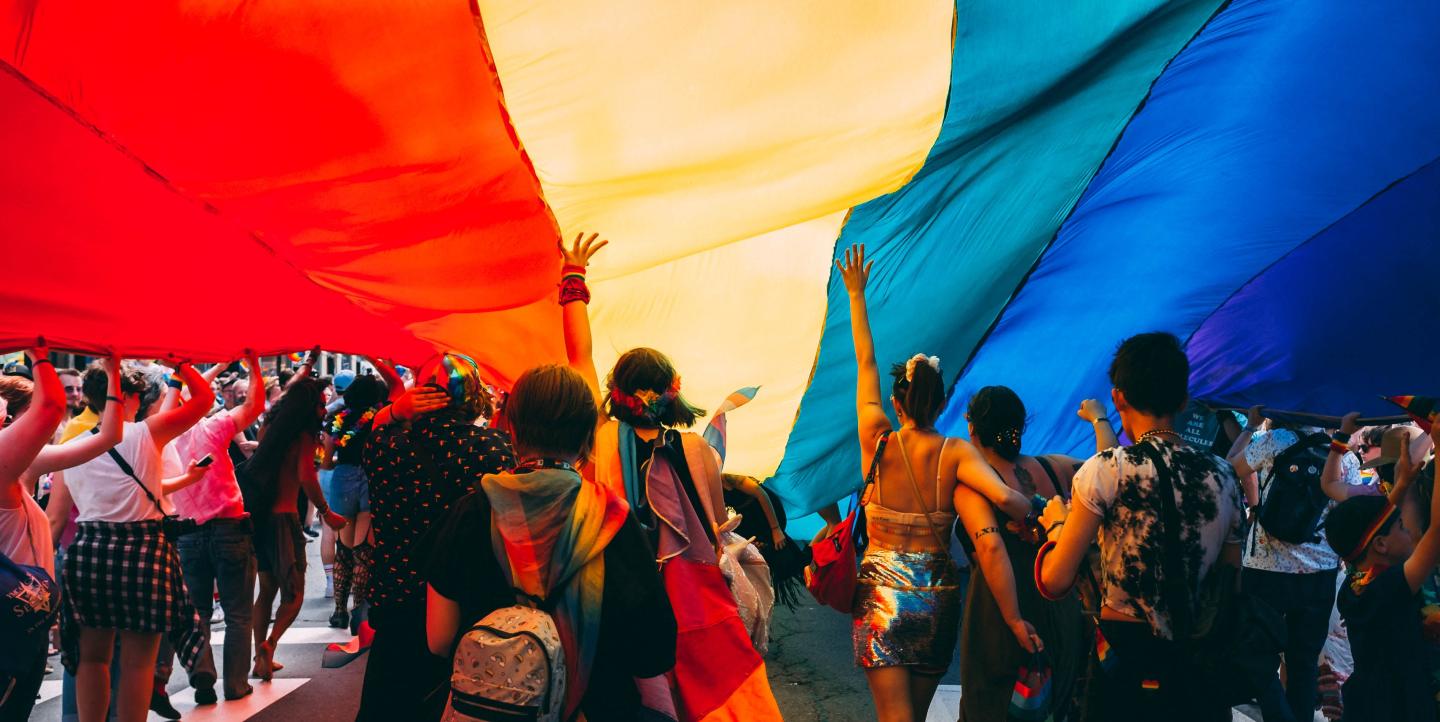This article was originally published on Poynter. We published the piece in two parts; the first can be found here.
Edit photography with an eye toward accurate representation
Photojournalists should be thoughtful about the photos and videos they choose to represent a Pride event. They should resist choosing the most salacious outfits to get the “best picture,” and instead make choices that accurately represent the diversity of the crowd gathered.
McBride pointed out the disproportionate number of photographs published from Pride parades that show, for example, men in leather harnesses or chaps.
“I get that those photographs are sometimes the most interesting … (but) they are not necessarily representative of the community,” she said. “Go back to: What’s your purpose? Are you trying to make the gay community look as weird as possible? Especially in Florida, right? I feel like it’s mostly moms and their kids, but you don’t often see that in the photographs.”
Some Pride organizers in Florida say they’re nervous that unrepresentative photography at their events could lead to criminal charges under S.B. 1438. Jeffrey Sterling, CEO of Stonewall Pride Inc. and organizer of Wilton Manors Stonewall Parade & Street Festival, chose to drastically change the event staff and performers’ dress and conduct codes so that children could attend without any potential fines or jail time against organizers or parents.
“No buttocks, no genitals visible for females or female-presenting people wearing prosthetic or fake boobs,” he said. “There’ll be no vulgarity, no sexualized language, no touching yourself in a sexual way. No touching others in a sexual way. No dancing in a sexualized way. So if you’re an early Madonna, that ain’t going to fly. Later Madonna, where she got older, is more like what we’re talking about.”
Sterling is worried about press photographers focusing on any infraction they see, rather than the overall family-friendly environment.
“Everything reported in the press is fodder to feed the cannon of (Gov. Ron) DeSantis. So I just asked them to be fair on that,” he said. “If out of 50,000 people, there’s one set of breasts out, actually, that’s pretty good.”
Journalists should also ask permission, especially of parents of minors, before photographing any close-up or identifiable images.
“Obviously consent is the key word,” Fenning said.
Have a plan for violence
It’s important newsrooms and journalists have coverage plans for violence at Pride events. Violence is not a far-fetched possibility. In March, police in Orlando said a traffic sign was tampered with to read “KILL ALL GAYS.” White nationalist organization the Proud Boys have already publicized their intent to violently disrupt Pride events, according to multiple watchdog organizations. Drag events, especially those for children, have been the target of hundreds of threats, intimidation tactics and armed protesters.
“Certainly there’s an increased chance of violence at all of these events this year,” McBride said. “The rhetoric has been so heated and people have been so emboldened that I think everybody needs a contingency plan for covering some sort of outbreak.”
Pride organizers and participants are well aware of the threat.
“There is a heightened uneasiness” this year, said Fenning, whose organization PRISM will be tabling at Pride events in Florida, where a law just passed allowing people to carry a concealed handgun without a permit. “That is a major concern for a lot of people at Pride.” He anticipates a somewhat bittersweet undertone to many Pride celebrations.
Let queer journalists lead during Pride
Queer journalists are sometimes seen as “too close” to the issue to report on Pride and LGBTQ+ rights objectively. But this is simply not true.
“It would be horrific to suggest that because you’re queer, you have a bias that prevents you from adequately documenting what’s going on in your community. That would be ridiculous,” said McBride. “I think that anything where you have a marginalized community, you want to have voices from that marginalized community informing how you cover them, because otherwise, you’re defaulting to a point of view that is reflective of the power structure, and you’re not even realizing it.”
Deferring to queer newsroom leaders also helps “get away from some of those distortions” that can be common in Pride coverage, she said.
And even with the threat of violence, and real attempts to strip LBGTQ+ people of their rights and dignity nationwide, journalists can and should still capture the joy at Pride events.
“Queer joy is an act of resistance in itself,” said Dr. Green-Calisch.
“There is something so powerful about seeing your community reflected in full force and showings of joy and showings of power,” Fenning said. “Being able to see that as a young person, being able to see people that have lived experiences not too dissimilar from your own, (who) are able to just exhibit this pure joy, this oftentimes despite the odds, is really, really, really impactful for a lot of young people.”
Photo by Mercedes Mehling on Unsplash.

